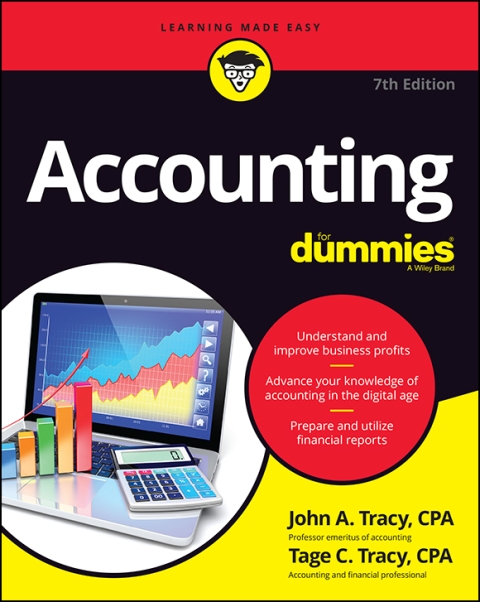Description
Efnisyfirlit
- Cover Page
- Title Page
- Copyright Page
- Brief contents
- Contents
- Preface
- Publisher’s acknowledgements
- About the authors
- 1 Introduction to marketing research and insight
- Objectives
- Overview
- What does ‘marketing research’ mean?
- Marketing research in context
- Definition of marketing research
- The global marketing research industry
- Justifying the investment in marketing research
- The future – addressing the marketing research skills gap
- Summary
- Questions
- Exercises
- Notes
- 2 Defining the research problem and developing a research approach
- Objectives
- Overview
- Importance of defining the research problem
- The marketing research brief
- Components of the marketing research brief
- The marketing research proposal
- The process of defining the problem and developing a research approach
- Environmental context of the problem
- Discussions with decision makers
- Interviews with industry experts
- Initial secondary data analyses
- Marketing decision problem and marketing research problem
- Defining the marketing research problem
- Components of the research approach
- Objective/theoretical framework
- Research questions
- Hypothesis
- Summary
- Questions
- Exercises
- Notes
- 3 Research design
- Objectives
- Overview
- Research design definition
- Research design from the decision makers’ perspective
- Research design from the participants’ perspective
- Research design classification
- Descriptive research
- Causal research
- Relationships between exploratory, descriptive and causal research
- Potential sources of error in research designs
- Summary
- Questions
- Exercises
- Notes
- 4 Secondary data collection and analysis
- Objectives
- Overview
- Defining primary data, secondary data and marketing intelligence
- Advantages and uses of secondary data
- Disadvantages of secondary data
- Criteria for evaluating secondary data
- Classification of secondary data
- Published external secondary sources
- Databases
- Classification of online databases
- Syndicated sources of secondary data
- Syndicated data from households
- Syndicated data from institutions
- Summary
- Questions
- Exercises
- Notes
- 5 Internal secondary data and analytics
- Objectives
- Overview
- Internal secondary data
- Geodemographic data analyses
- Customer relationship management
- Big data
- Web analytics
- Linking different types of data
- Summary
- Questions
- Exercises
- Notes
- 6 Qualitative research: its nature and approaches
- Objectives
- Overview
- Primary data: qualitative versus quantitative research
- Rationale for using qualitative research
- Philosophy and qualitative research
- Ethnographic research
- Grounded theory
- Action research
- Summary
- Questions
- Exercises
- Notes
- 7 Qualitative research: focus group discussions
- Objectives
- Overview
- Classifying qualitative research techniques
- Focus group discussion
- Planning and conducting focus groups
- The moderator
- Other variations of focus groups
- Other types of qualitative group discussions
- Misconceptions about focus groups
- Online focus groups
- Advantages of online focus groups
- Disadvantages of online focus groups
- Summary
- Questions
- Exercises
- Notes
- 8 Qualitative research: in-depth interviewing and projective techniques
- Objectives
- Overview
- In-depth interviews
- Projective techniques
- Comparison between qualitative techniques
- Summary
- Questions
- Exercises
- Notes
- 9 Qualitative research: data analysis
- Objectives
- Overview
- The qualitative researcher
- The process of qualitative data analysis
- Grounded theory
- Content analysis
- Semiotics
- Qualitative data analysis software
- Summary
- Questions
- Exercises
- Notes
- 10 Survey and quantitative observation techniques
- Objectives
- Overview
- Survey methods
- Online surveys
- Telephone surveys
- Face-to-face surveys
- A comparative evaluation of survey methods
- Other survey methods
- Mixed-mode surveys
- Observation techniques
- Observation techniques classified by mode of administration
- A comparative evaluation of the observation techniques
- Advantages and disadvantages of observation techniques
- Summary
- Questions
- Exercises
- Notes
- 11 Causal research design: experimentation
- Objectives
- Overview
- Concept of causality
- Conditions for causality
- Definitions and concepts
- Definition of symbols
- Validity in experimentation
- Extraneous variables
- Controlling extraneous variables
- A classification of experimental designs
- Pre-experimental designs
- True experimental designs
- Quasi-experimental designs
- Statistical designs
- Laboratory versus field experiments
- Experimental versus non-experimental designs
- Application: test marketing
- Summary
- Questions
- Exercises
- Notes
- 12 Measurement and scaling: fundamentals, comparative and non-comparative scaling
- Objectives
- Overview
- Measurement and scaling
- Scale characteristics and levels of measurement
- Primary scales of measurement
- A comparison of scaling techniques
- Comparative scaling techniques
- Non-comparative scaling techniques
- Itemised rating scales
- Itemised rating scale decisions
- Multi-item scales
- Scale evaluation
- Choosing a scaling technique
- Mathematically derived scales
- Summary
- Questions
- Exercises
- Notes
- 13 Questionnaire design
- Objectives
- Overview
- Questionnaire definition
- Questionnaire design process
- Specify the information needed
- Specify the type of interviewing method
- Determine the content of individual questions
- Overcoming the participant’s inability and unwillingness to answer
- Choose question structure
- Choose question wording
- Arrange the questions in proper order
- Identify the form and layout
- Reproduce the questionnaire
- Eliminate problems by pilot-testing
- Summarising the questionnaire design process
- Designing surveys across cultures and countries
- Summary
- Questions
- Exercises
- Notes
- 14 Sampling: design and procedures
- Objectives
- Overview
- Sample or census
- The sampling design process
- A classification of sampling techniques
- Non-probability sampling techniques
- Probability sampling techniques
- Choosing non-probability versus probability sampling
- Summary of sampling techniques
- Issues in sampling across countries and cultures
- Summary
- Questions
- Exercises
- Notes
- 15 Sampling: determining sample size
- Objectives
- Overview
- Definitions and symbols
- The sampling distribution
- Statistical approaches to determining sample size
- The confidence interval approach
- Multiple characteristics and parameters
- Other probability sampling techniques
- Adjusting the statistically determined sample size
- Calculation of response rates
- Non-response issues in sampling
- Summary
- Questions
- Exercises
- Notes
- 16 Survey fieldwork
- Objectives
- Overview
- The nature of survey fieldwork
- Survey fieldwork and the data-collection process
- Selecting survey fieldworkers
- Training survey fieldworkers
- Recording the answers
- Supervising survey fieldworkers
- Evaluating survey fieldworkers
- Fieldwork and online research
- Fieldwork across countries and cultures
- Summary
- Questions
- Exercises
- Notes
- 17 Social media research
- Objectives
- Overview
- What do we mean by ‘social media’?
- The emergence of social media research
- Approaches to social media research
- Accessing social media data
- Social media research methods
- Research with image and video data
- Limitations of social media research
- Summary
- Questions
- Exercises
- Notes
- 18 Mobile research
- Objectives
- Overview
- What is a mobile device?
- Approaches to mobile research
- Guidelines specific to mobile marketing research
- Key challenges in mobile research
- Summary
- Questions
- Exercises
- Notes
- 19 Data integrity
- Objectives
- Overview
- The data integrity process
- Checking the questionnaire
- Editing
- Coding
- Transcribing
- Cleaning the data
- Statistically adjusting the data
- Selecting a data analysis strategy
- Data integrity across countries and cultures
- Practise data analysis with SPSS
- Summary
- Questions
- Exercises
- Notes
- 20 Frequency distribution, cross-tabulation and hypothesis testing
- Objectives
- Overview
- Frequency distribution
- Statistics associated with frequency distribution
- A general procedure for hypothesis testing
- Cross-tabulations
- Statistics associated with cross-tabulation
- Hypothesis testing related to differences
- Parametric tests
- Non-parametric tests
- Practise data analysis with SPSS
- Summary
- Questions
- Exercises
- Notes
- 21 Analysis of variance and covariance
- Objectives
- Overview
- Relationship among techniques
- One-way ANOVA
- Statistics associated with one-way ANOVA
- Conducting one-way ANOVA
- Illustrative applications of one-way ANOVA
- n-way ANOVA
- Analysis of covariance (ANCOVA)
- Issues in interpretation
- Repeated measures ANOVA
- Non-metric ANOVA
- Multivariate ANOVA
- Practise data analysis with SPSS
- Summary
- Questions
- Exercises
- Notes
- 22 Correlation and regression
- Objectives
- Overview
- Product moment correlation
- Partial correlation
- Non-metric correlation
- Regression analysis
- Bivariate regression
- Statistics associated with bivariate regression analysis
- Conducting bivariate regression analysis
- Multiple regression
- Statistics associated with multiple regression
- Conducting multiple regression analysis
- Multicollinearity
- Relative importance of predictors
- Cross-validation
- Regression with dummy variables
- Analysis of variance and covariance with regression
- Practise data analysis with SPSS
- Summary
- Questions
- Exercises
- Notes
- 23 Discriminant and logit analysis
- Objectives
- Overview
- Basic concept of discriminant analysis
- Relationship of discriminant and logit analysis to ANOVA and regression
- Discriminant analysis model
- Statistics associated with discriminant analysis
- Conducting discriminant analysis
- Conducting multiple discriminant analysis
- Stepwise discriminant analysis
- The logit model
- Conducting binary logit analysis
- Practise data analysis with SPSS
- Summary
- Questions
- Exercises
- Notes
- 24 Factor analysis
- Objectives
- Overview
- Basic concept
- Factor analysis model
- Statistics associated with factor analysis
- Conducting factor analysis
- Applications of common factor analysis
- Practise data analysis with SPSS
- Summary
- Questions
- Exercises
- Notes
- 25 Cluster analysis
- Objectives
- Overview
- Basic concept
- Statistics associated with cluster analysis
- Conducting cluster analysis
- Applications of non-hierarchical clustering
- Applications of TwoStep clustering
- Clustering variables
- Practise data analysis with SPSS
- Summary
- Questions
- Exercises
- Notes
- 26 Multidimensional scaling and conjoint analysis
- Objectives
- Overview
- Basic concepts in MDS
- Statistics and terms associated with MDS
- Conducting MDS
- Assumptions and limitations of MDS
- Scaling preference data
- Correspondence analysis
- Relationship among MDS, factor analysis and discriminant analysis
- Basic concepts in conjoint analysis
- Statistics and terms associated with conjoint analysis
- Conducting conjoint analysis
- Assumptions and limitations of conjoint analysis
- Hybrid conjoint analysis
- Practise data analysis with SPSS
- Summary
- Questions
- Exercises
- Notes
- 27 Structural equation modelling and path analysis
- Objectives
- Overview
- Basic concepts in SEM
- Statistics and terms associated with SEM
- Foundations of SEM
- Conducting SEM
- Higher-order CFA
- Relationship of SEM to other multivariate techniques
- Application of SEM: first-order factor model
- Application of SEM: second-order factor model
- Path analysis
- Software to support SEM
- Summary
- Questions
- Exercises
- Notes
- 28 Communicating research findings
- Objectives
- Overview
- Why does communication of research findings matter?
- Importance of the report and presentation
- Preparation and presentation process
- Report preparation
- Guidelines for graphs
- Report distribution
- Digital dashboards
- Infographics
- Oral presentation
- Research follow-up
- Summary
- Questions
- Exercises
- Notes
- 29 Business-to-business (b2b) marketing research
- Objectives
- Overview
- What is b2b marketing and why is it important?
- The distinction between b2b and consumer marketing
- Concepts underlying b2b marketing research
- Implications of the differences between business and consumer purchases for researchers
- The growth of competitive intelligence
- The future of b2b marketing research
- Summary
- Questions
- Exercises
- Notes
- 30 Research ethics, privacy and trust
- Objectives
- Overview
- Ethics in marketing research
- Professional ethics codes
- Ethics in the research process
- Ethics in data collection
- Data analysis
- Ethical communication of research findings
- Key issues in research ethics: informed consent
- Key issues in research ethics: maintaining respondent trust
- Key issues in research ethics: anonymity and privacy
- Key issues in research ethics: sugging and frugging
- Summary
- Questions
- Exercises
- Notes
- Glossary
- Subject Index
- Name Index
- Index of Organisations





